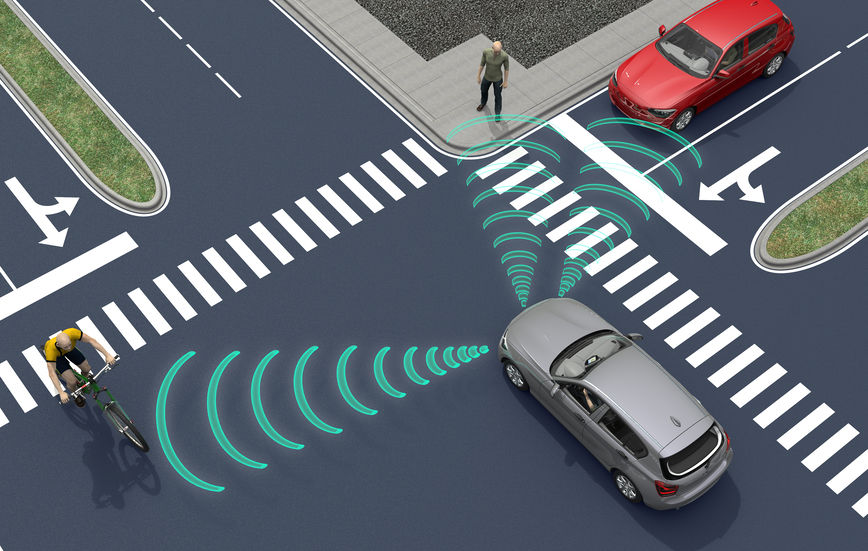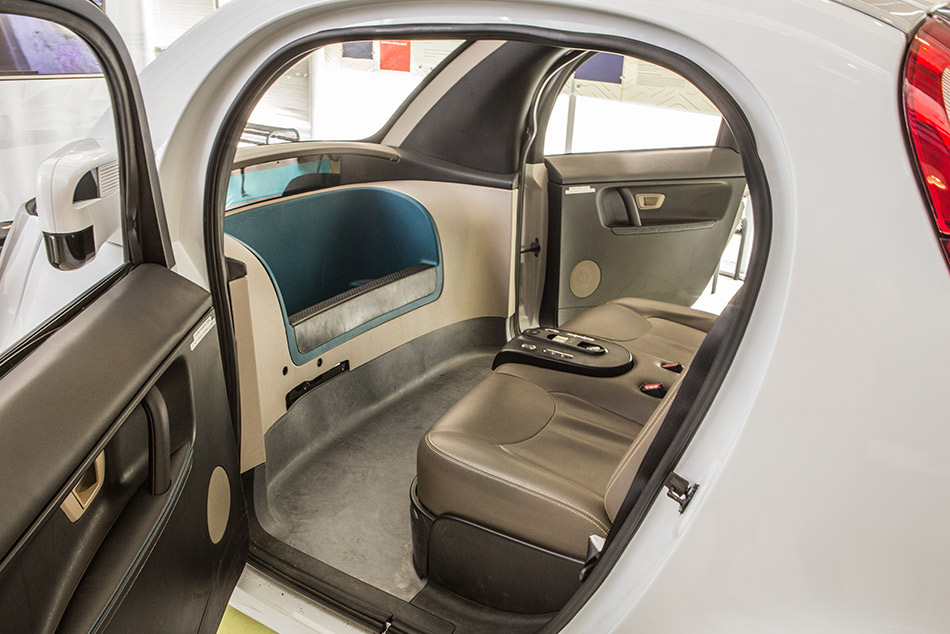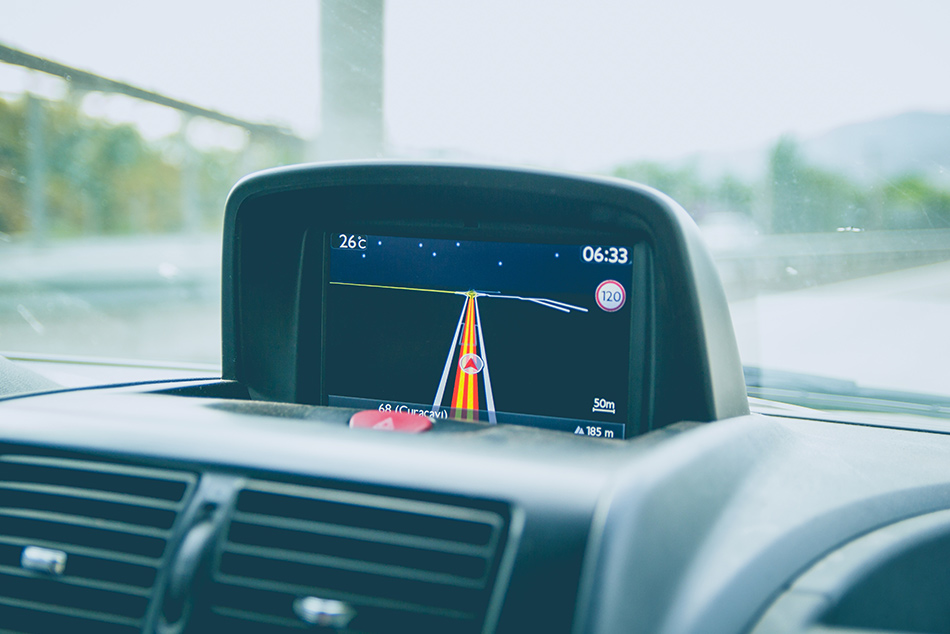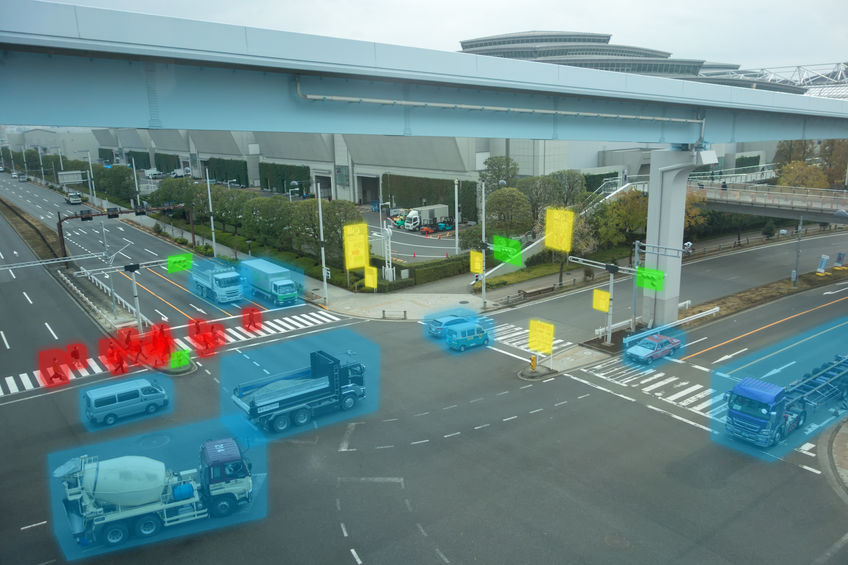Blog Categories

Self driving cars and the law - more problems than answers
Introduction
Of all the topics facing legislators the question of the regulation of automated vehicles is one of the most difficult. It combines legal, philosophical and economic problems in a way that the law has not had to deal with in living memory.
This is a fledgling area where the pace of innovation is rapid and the Government is aware that it faces an immediate problem when considering legislating in this area. If it moves too quickly and over legislates there is the danger of suppressing innovation and killing potentially beneficial technologies before they can be developed. On the other hand, if legislation is delayed too much there is the danger that the public will be insufficiently protected.
The UK government has been admirably proactive in trying to grapple with this and other problems. The Centre for Connected and Automated Vehicles (centre for connected and autonomous vehicles) has been established and is at the cutting edge of current thinking. The government through CCAV are providing £250m, backed by industry for research and development projects. Legislation has also been moved forward, cautiously. The Automated and Electric Vehicles Act 2018 has put into law some certainties, definitions and clarity of civil liability but as we will see, a host of problems remain.
In an attempt to gather feedback from experts Government has, through the Law Commission, launched a consultation paper – ‘Automated Vehicles- A joint preliminary consultation paper’ dated 8th November 2018, to examine options for regulating automated road vehicles. The consultation period is 3 years, from March 2018 to March 2021 and given the pace of change in this area many commentators have wondered whether the parameters for consultation will still be relevant in 2021.
The government sets sensible parameters for regulation, their focus being on autonomous vehicles being used:
a)Lawfully;
b)Safely; and
c)With appropriate mechanisms being in place for the attribution of civil and criminal liability when things go wrong.
The below article examines the headline problems that the Law faces in dealing with the challenge of autonomous vehicles and ponders whether at present, there are more questions than answers.
>
What is an autonomous vehicle?
This may seem like a basic question but it is legally important. Nearly all modern cars contain an element of automation. Cruise control is automatic, as are many headlights, some cars contain ‘self parking’ features. What should be regulated? What are the definitions?
It appears to be generally accepted that there is a difference between a ‘driver aid’ and full automation. A driver aid being something such as cruise control which assists a driver in their use of the vehicle but cannot fully take control. Full automation is something entirely different.
The current international definition of an automated vehicle can be found within the UNECE “Global Forum for Road Traffic Safety resolution on the deployment of highly and fully automated vehicles in road traffic” (2018) ECE/TRANS/WP.1/165 Annex 1, paragraph 3(b) which defines automated driving systems as “the combination of hardware and software that can exercise dynamic control of a vehicle on a sustained basis”.
The legal definition within England and Wales is contained within s8(1) of the Automated and Electric Vehicles Act 2018 and defines an automated vehicle as a road-based vehicle that is capable of “driving itself”. This effectively means that the vehicle is capable of operating in an automated mode, where it is not being controlled by a human and does not require monitoring by a human, for all or a part of a journey
The future use of autonomous vehicles could take many forms. Some journeys may be completely automated where the humans will merely be passengers, who may be unqualified or otherwise unfit to drive, with no responsibility for the safety of the vehicle. In other journeys, however, there may still need to be a human “in the loop”, to take over from the automated driving system in certain circumstances. So it is important that there is clarity of when ‘driving’ takes place.
But what is ‘driving’?
So, how does the law define driving? This is not as easy as it may seem. The Courts have already gone some way to attempting to solve this problem but as we will see the result is less than crystal clear.
The current test for whether a person is driving depends upon whether they are "in a substantial sense controlling the movement and direction of the car”.
Lord Widgery CJ in R v MacDonagh, gave what is probably the most accepted definition:
“The essence of driving is the use of the driver's controls in order to direct the movement, however that movement is produced.”
This being the law, things are not always black and white, and the Courts have added finesse to this definition in subsequent case law. In R v MacDonagh, a car was blocking a road and a police officer told the appellant (a disqualified driver) to move it. The appellant whilst standing on the road pushed the vehicle, whilst steering with one hand through the car’s window. The Court of Appeal held that this was not driving as it did not fall within the ordinary meaning of the word. In something of a contradiction to his own comment in MacDonagh, Lord Widgery stated that:
“Giving the words their ordinary meaning there must be a distinction between driving a car and pushing it. The dividing line will not always be easy to draw, and the distinction will often turn on the extent and degree to which the defendant was relying on the use of the driver's controls.”
The contradictions continue: in Jones v Pratt, it was held that a passenger wasn’t driving, despite grabbing the steering wheel and therefore causing the car to leave the road. In another case the defendant was drunk was trying to drive, he allowed the car to roll forward 30 feet before stopping. He had not realised that the keys were not in the ignition and that the steering was locked (Burgoyne v Phillips). This was held to be driving the car, despite the fact that the ‘driver had not at all directed the movement of the car’. The case is significant as it outlines the fact that a failure to direct the vehicle may also render a person liable for driving offences.
In short, the law is contradictory and confusing in this regard. It will be very difficult to properly apply it to thorny questions relating to driverless cars. In short, the law properly needs clarification. As stated in ‘Automated Vehicles A joint preliminary consultation paper’ (2018):
“The definition of driving is clearly a flexible one which, without statutory reform, may be difficult to apply to driving automation.”

A new category of road user- the ‘User in Charge’
Currently only a ‘driver’ may operate a motor vehicle on the public highway and there are certain obligations that every driver must comply with-
-They must be qualified: every driver of a motor vehicle must hold a driving permit under section 87 of the Road Traffic Act 1988.
-They must fit to drive: a driver has an obligation to refrain from the consumption of drugs and not consume alcohol in excess of the legal limit under section 4 and 5 of the RTA 1988.
-They must operate the vehicle free from distractions: a driver must drive with due care and attention under s3 of the RTA 1988 and avoid major distractions (various legislation) although some like eating and drinking are allowed
Clearly this fits the model of the driver of the vehicle being in charge of the vehicle and ‘driving’ at all times. However, the Government has proposed a new category of road user, the “user-in- charge”.
This is discussed in the above mentioned consultation paper and is defined as follows:
“The user-in-charge would not be a driver whilst the automated driving system was in operation but must be qualified and fit to drive. Their main role would be to take over in planned circumstances or after the vehicle has achieved a minimal risk condition and has come to a stop.”
So this would mean that the User in Charge would be capable of operating the vehicle and would be qualified to do so but would not be required to supervise the vehicle, rather to be fit, qualified and capable to take over if necessary when the car is driving itself.
Importantly, the user-in-charge is not classified as the driver. When the automated driving system is in operation, the human would be allowed to do other things and would not be responsible for driving. This would be the responsibility of the autonomous vehicle. The Government does not foresee that the user-in-charge would be a supervisor: they must be able to take over from the automated driving system, rather than to supervise it. However, in legal terms, there are some similarities. A supervisor must hold a relevant licence, but is not considered to be driving unless they take control.
Again, the operation of and the concept of a ‘user in charge’ is fraught with problems- both legal and philosophical. Here are a few examples -
-‘Safe Harbor’- should a human User in Charge be granted impunity from bad decisions made by their vehicle when the vehicle is driving? Or should the responsibility remain with the human to prevent the use of vehicles with poor safety records?
- Blame time- if an autonomous vehicle gets itself in a dangerous situation and hands over control to a human how long after the handover is the vehicle to blame for occurrences that arise from the danger? When and in what circumstances does the human gain liability? What if the human makes things worse?
- What about an obligation to avoid a danger? If the user in charge sees that the vehicle is about to cause a danger but the user in charge is not requested to intervene. Is this subjective? What if the user in charge is wrong and the software has chosen the safest option? What about the avoidance of unnecessary death problem as famously encapsulated in Phillipa Foot’s ‘trolley problem’ thought experiment? *REQUIRES EXPLANATION?
- Is a user in charge really necessary? (‘the big tech argument’). A passenger-only vehicle would bring benefits to many including those who cannot drive because of age or disability. There is also a perceived benefit to vehicles being able to drive empty. Delivery vehicles, taxis etc. travelling empty would allow much greater use of vehicles, which could move seamlessly from one customer to another.
As we can see the concept is an interesting one but in order for the User in Charge to become a distinct class of legal entity we may need clarification in respect of a number of problems that arise as soon as the concept is subject to scrutiny.
Interestingly the government has already begun to grasp the nettle in respect of civil liability for accidents where an autonomous vehicle is being used. Under section 2(1) of the Automated and Electric Vehicles Act 2018, where there is an accident which occurs while an automated vehicle is driving itself, the vehicle’s insurer is directly liable and that insurer may recover damages from another party at fault, such as the manufacturer. It will be fascinating to see how the civil authorities develop as a result of this piece of legislation and to what extent it will inform the Government’s thinking on the much thornier issue of criminal liability.
The criminal liability of Car vs Human
A criminal sanction for road traffic offences is not merely an economic penalty and deterrent but it also represents public censure and can directly lead to loss of employment and stigma. It therefore makes sense to say when a vehicle is driving itself, the human user is not the ‘driver’ and therefore should not be liable for any offences which are committed while the car is in charge. Thankfully it appears that this is the preliminary view of the Government and this is their proposal the consultation paper together with a request that there is legal clarification on the issue.
But in those circumstances what about when the car commits an offence? What happens?
The issue has been considered in Australia by the National Transport Commission (NTC). In respect of automated vehicles, the NTC recommends that alongside each autonomous vehicle there should also be an Automated Driving System Entity (ADSE). This would be a separate legal entity who would have to apply for authorisation for use and who could be liable for sanction in respect of wrongdoing:
The safety assurance system could include a range of compliance and enforcement options including graduated sanctions and penalties. These could include improvement notices, infringement notices, enforceable undertakings, suspension and withdrawal of ADS approval.
The government propose a similar system where manufacturers who gain authorisation for their vehicles would have to stand behind the system. In other words, each automated driving system would be backed by a legal entity that could be subject to a system of sanctions should wrongdoing or failure occur. These could include improvement notices, fines and where necessary suspension or withdrawal of approval.

Rolling out Autonomous Vehicles- How will it work? Grasping the nettle.
Another economic and philosophical nettle that the Government and the Law will have to grasp is how autonomous vehicles will be rolled out. The practicalities. Here there is a potential tug-of-war between competing interests.
There are two potential gateways towards a full ‘roll out’ of fully autonomous vehicles where the car is ‘self driving’ (Organisation for Economic Co-operation and Development 2015):
Gateway A is a gradual improvement of the automation in the current stock of vehicles sold to the public. Here the car will continue to have a driver but as technology evolves the human driver will be able to increasingly give over control of the car to a computer.
Gateway B involves allowing the use of driverless vehicles in defined local areas and gradually increasing the areas in which they are used. In this scenario the human is the passenger rather than the driver.
As well as the legal and philosophical implications of the two different gateways there are competing economic interests.
Gateway A is obviously already being pursued heavily by motor manufacturers whose business model virtually entirely grounded upon the sale of cars for independent ownership. The proponents of ‘big motor’ are firmly behind this model.
Gateway B involves an emphasis on the commodity being the journey as opposed to the vehicle. One can see the trials already taking place in the US where the business model involves the movement towards the offering of ‘on demand’ transportation without the need for a human driver. This gateway is being pushed by ‘big tech’ who do not traditionally have motor industry experience- Uber and Google are the obvious leaders in this field.
At the moment the UK Government is attempting to be neutral between the two competing lobbies by not publically favouring either path.
There are few self imposed requirements upon the government at the moment in respect of how this will develop. One such requirement is under section 1 of the Automated and Electric Vehicles Act 2018:
the Secretary of State must prepare, and keep up to date, a list of all motor vehicles that:
(1) are in the Secretary of State’s opinion designed or adapted to be capable, in at least some circumstances or situations, of safely driving themselves; and
(2) may lawfully be used when driving themselves, in at least some circumstances or situations, on roads or other public places in Great Britain.
The other is the Government publication of a Code of Practice for the testing of autonomous vehicles- Department for Transport, The Pathway to Driverless Cars: a Code of Practice for testing (2015) (pathway-driverless-cars.pdf.) which helps to provide clarification over the boundaries for the testing of vehicles but which is already starting to look a little out of date.
With the pace of technological change and the increasing demands for real world testing that the two sides will demand it will be very interesting to see how governmental regulation progresses.
Conclusion
In conclusion, there is no foreseeable conclusion to this thorny area of the law. As the technology develops the interplay between technological, economic, philosophical and legal questions will get more complex. The British Government is doing a good job of trying to grapple with the problems inherent in regulating the emergent tech but it appears that as at the present time there are more questions than answers. If truly autonomous vehicles are going to be commonplace on our roads, then there needs to be a wholesale change in our legal and regulatory environment that we are not yet prepared for. However, we are moving in the right direction and with the appropriate level of legislative oversight there is no real reason why we could not see autonomous self driving vehicles on our roads in the very near future.
Contact Quentin if you are interested in the issues of this article